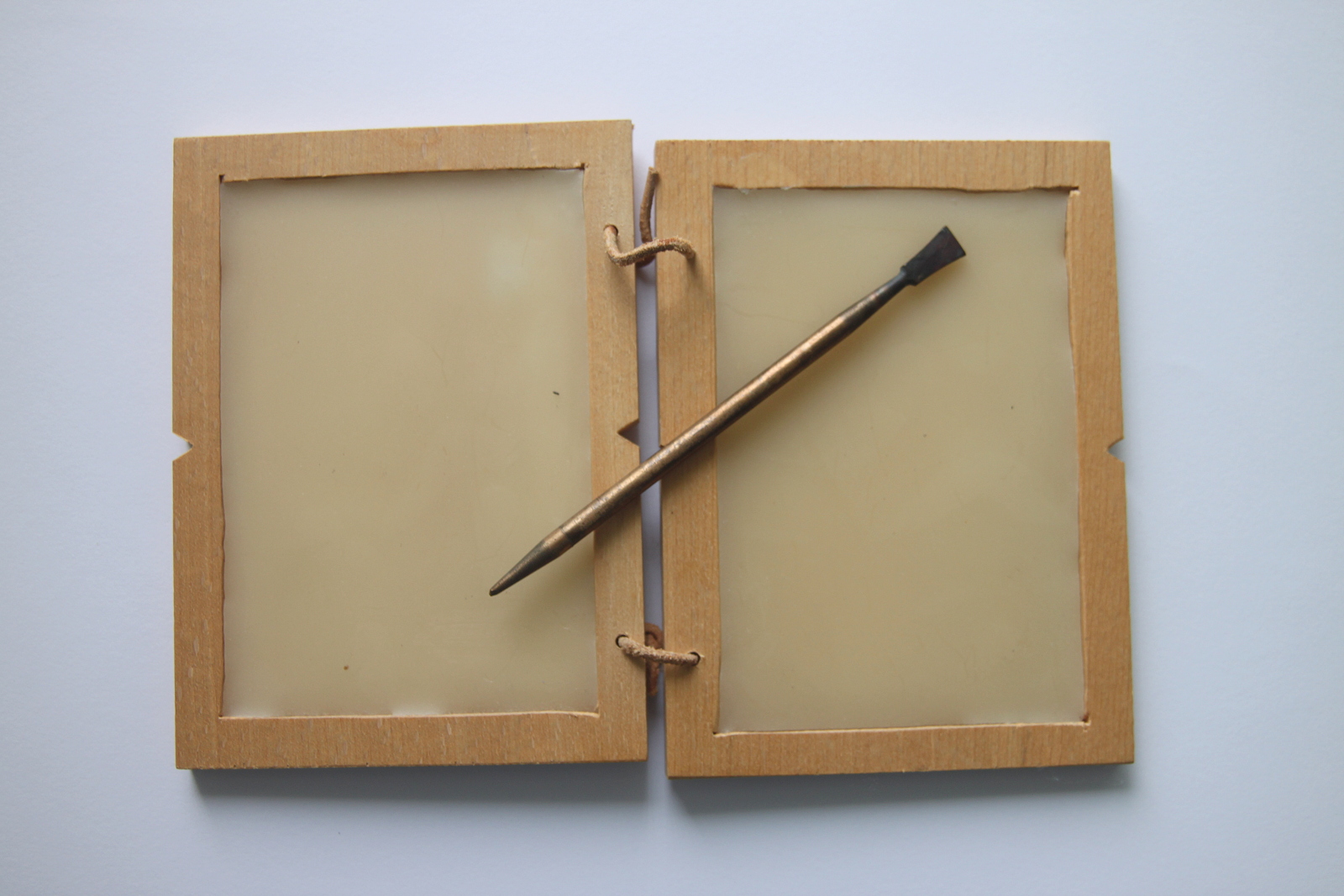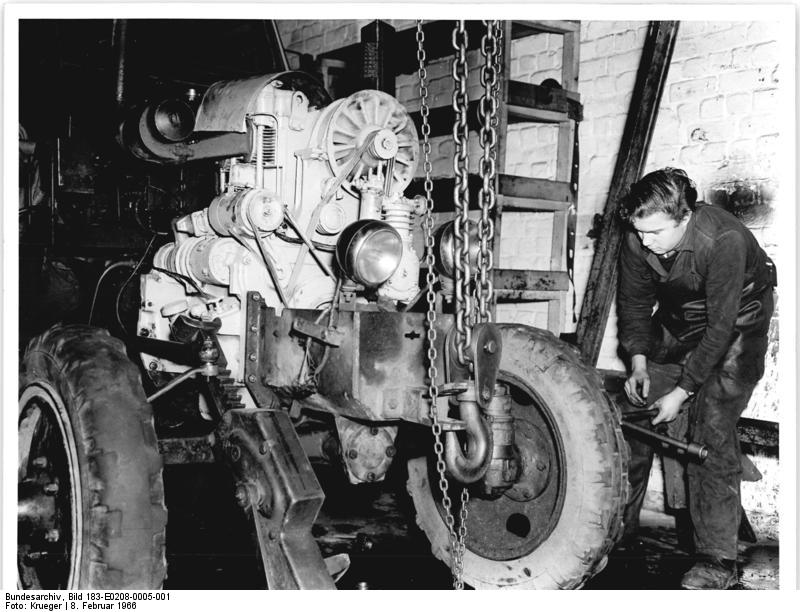|
Conservation And Restoration Of Vinyl Discs
The conservation and restoration of vinyl discs refers to the preventive measures taken to defend against damage and slow degradation, and to maintain fidelity of singles, 12" singles, EP’s, and LP’s in 45 or 33⅓ rpm 10” disc recordings. Vinyl LP preservation is generally considered separate from conservation, which refers to the repair and stabilization of individual discs. Commonly practiced in major sound archives and research libraries that house large collections of audio recordings, it is also frequently followed by audiophiles and home record collectors. Because vinyl—a virtually unbreakable light plastic made up of polyvinyl chloride acetate copolymer, or PVC—is considered the most stable of analog recording media, it is seen as less a concern for deterioration than earlier sound recordings made from more fragile materials such as acetate, vulcanite, or shellac. This hardly means that vinyl recordings are infallible, however, and research—both expert and ... [...More Info...] [...Related Items...] OR: [Wikipedia] [Google] [Baidu] |
Fidelity
Fidelity is the quality of faithfulness or loyalty. Its original meaning regarded duty in a broader sense than the related concept of ''fealty''. Both derive from the Latin word ''fidēlis'', meaning "faithful or loyal". In the City of London financial markets it has traditionally been used in the sense encompassed in the motto "My word is my bond". Audio and electronics In audio, "fidelity" denotes how accurately a copy reproduces its source. In the 1950s, the terms " high fidelity" or "hi-fi" were popularized for equipment and recordings which exhibited more accurate sound reproduction. For example, a worn gramophone record will have a lower fidelity than one in good condition, and a recording made by a low budget record company in the early 20th century is likely to have significantly less audio fidelity than a good modern recording. Similarly in electronics, fidelity refers to the correspondence of the output signal to the input signal, rather than sound quality, as in t ... [...More Info...] [...Related Items...] OR: [Wikipedia] [Google] [Baidu] |
Plastics
Plastics are a wide range of synthetic polymers, synthetic or semi-synthetic materials that use polymers as a main ingredient. Their Plasticity (physics), plasticity makes it possible for plastics to be Injection moulding, moulded, Extrusion, extruded or Compression molding, pressed into solid objects of various shapes. This adaptability, plus a wide range of other properties, such as being lightweight, durable, flexible, and inexpensive to produce, has led to its widespread use. Plastics typically are made through human industrial systems. Most modern plastics are derived from petrochemical, fossil fuel-based chemicals like natural gas or petroleum; however, recent industrial methods use variants made from renewable materials, such as corn or cotton derivatives. 9.2 billion tonnes of plastic are estimated to have been made between 1950 and 2017. More than half this plastic has been produced since 2004. In 2020, 400 million tonnes of plastic were produced. If global trends on pl ... [...More Info...] [...Related Items...] OR: [Wikipedia] [Google] [Baidu] |
Petroleum
Petroleum, also known as crude oil, or simply oil, is a naturally occurring yellowish-black liquid mixture of mainly hydrocarbons, and is found in geological formations. The name ''petroleum'' covers both naturally occurring unprocessed crude oil and petroleum products that consist of refined crude oil. A fossil fuel, petroleum is formed when large quantities of dead organisms, mostly zooplankton and algae, are buried underneath sedimentary rock and subjected to both prolonged heat and pressure. Petroleum is primarily recovered by oil drilling. Drilling is carried out after studies of structural geology, sedimentary basin analysis, and reservoir characterisation. Recent developments in technologies have also led to exploitation of other unconventional reserves such as oil sands and oil shale. Once extracted, oil is refined and separated, most easily by distillation, into innumerable products for direct use or use in manufacturing. Products include fuels such as gasol ... [...More Info...] [...Related Items...] OR: [Wikipedia] [Google] [Baidu] |
Pollutants
A pollutant or novel entity is a substance or energy introduced into the environment that has undesired effects, or adversely affects the usefulness of a resource. These can be both naturally forming (i.e. minerals or extracted compounds like oil) or anthropogenic in origin (i.e. manufactured materials or byproducts from biodegradation). Pollutants result in environmental pollution or become public health concerns when they reach a concentration high enough to have significant negative impacts. A pollutant may cause long- or short-term damage by changing the growth rate of plant or animal species, or by interfering with human amenities, comfort, health, or property values. Some pollutants are biodegradable and therefore will not persist in the environment in the long term. However, the degradation products of some pollutants are themselves polluting such as the products DDE and DDD produced from the degradation of DDT. Pollution has widespread negative impacts on the environ ... [...More Info...] [...Related Items...] OR: [Wikipedia] [Google] [Baidu] |
Oils
An oil is any nonpolar chemical substance that is composed primarily of hydrocarbons and is hydrophobic (does not mix with water) & lipophilic (mixes with other oils). Oils are usually flammable and surface active. Most oils are unsaturated lipids that are liquid at room temperature. The general definition of oil includes classes of chemical compounds that may be otherwise unrelated in structure, properties, and uses. Oils may be animal, vegetable, or petrochemical in origin, and may be volatile or non-volatile. They are used for food (e.g., olive oil), fuel (e.g., heating oil), medical purposes (e.g., mineral oil), lubrication (e.g. motor oil), and the manufacture of many types of paints, plastics, and other materials. Specially prepared oils are used in some religious ceremonies and rituals as purifying agents. Etymology First attested in English 1176, the word ''oil'' comes from Old French ''oile'', from Latin ''oleum'', which in turn comes from the Greek (''elaion'') ... [...More Info...] [...Related Items...] OR: [Wikipedia] [Google] [Baidu] |
Parts Cleaning
Parts cleaning is essential to many industrial processes, as a prelude to surface finishing or to protect sensitive components. Electroplating is particularly a sensitive to part cleanliness, since molecular layers of oil can prevent the adhesion of the coating. ASTM B322 is a standard guide for cleaning metals prior to electroplating. Cleaning processes include solvent cleaning, hot alkaline detergent cleaning, electro-cleaning, and acid etch. The most common industrial test for cleanliness is the water-break test, in which the surface is thoroughly rinsed and held vertical. A quantitative measurement for this parameter is contact angle. Hydrophobic contaminants such as oils cause the water to bead and break up, allowing the water to drain rapidly. Perfectly clean metal surfaces are hydrophilic and will retain an unbroken sheet of water that does not bead up or drain off. ASTM F22 describes a version of this test. This test does not detect hydrophilic contaminants, but the electr ... [...More Info...] [...Related Items...] OR: [Wikipedia] [Google] [Baidu] |
Stylus
A stylus (plural styli or styluses) is a writing utensil or a small tool for some other form of marking or shaping, for example, in pottery. It can also be a computer accessory that is used to assist in navigating or providing more precision when using touchscreens. It usually refers to a narrow elongated staff, similar to a modern ballpoint pen. Many styluses are heavily curved to be held more easily. Another widely used writing tool is the stylus used by blind users in conjunction with the slate for punching out the dots in Braille. Etymology The English word ''stylus'' has two plurals: ''styli'' and ''styluses''. The original Latin word was spelled ; the spelling ''stylus'' arose from an erroneous connection with Greek (), 'pillar'.''Oxford Latin Dictionary'', s.v. "stilus" (2012). The Latin word had several meanings, including "a long, sharply pointed piece of metal; the stem of a plant; a pointed instrument for incising letters; the stylus (as used in literary composi ... [...More Info...] [...Related Items...] OR: [Wikipedia] [Google] [Baidu] |
Phonograph
A phonograph, in its later forms also called a gramophone (as a trademark since 1887, as a generic name in the UK since 1910) or since the 1940s called a record player, or more recently a turntable, is a device for the mechanical and analogue recording and reproduction of sound. The sound vibration waveforms are recorded as corresponding physical deviations of a spiral groove engraved, etched, incised, or impressed into the surface of a rotating cylinder or disc, called a "record". To recreate the sound, the surface is similarly rotated while a playback stylus traces the groove and is therefore vibrated by it, very faintly reproducing the recorded sound. In early acoustic phonographs, the stylus vibrated a diaphragm which produced sound waves which were coupled to the open air through a flaring horn, or directly to the listener's ears through stethoscope-type earphones. The phonograph was invented in 1877 by Thomas Edison. Alexander Graham Bell's Volta Laboratory made s ... [...More Info...] [...Related Items...] OR: [Wikipedia] [Google] [Baidu] |
Preventive Maintenance
The technical meaning of maintenance involves functional checks, servicing, repairing or replacing of necessary devices, equipment, machinery, building infrastructure, and supporting utilities in industrial, business, and residential installations. Over time, this has come to include multiple wordings that describe various cost-effective practices to keep equipment operational; these activities occur either before or after a failure. Definitions Maintenance functions can defined as maintenance, repair and overhaul (MRO), and MRO is also used for maintenance, repair and operations. Over time, the terminology of maintenance and MRO has begun to become standardized. The United States Department of Defense uses the following definitions:Federal Standard 1037C and from MIL-STD-188 and from the Department of Defense Dictionary of Military and Associated Terms * Any activity—such as tests, measurements, replacements, adjustments, and repairs—intended to retain or restore a func ... [...More Info...] [...Related Items...] OR: [Wikipedia] [Google] [Baidu] |
Guidelines
A guideline is a statement by which to determine a course of action. A guideline aims to streamline particular processes according to a set routine or sound practice. Guidelines may be issued by and used by any organization (governmental or private) to make the actions of its employees or divisions more predictable, and presumably of higher quality. A guideline is similar to a rule, but are legally less binding as justified deviations are possible. List of guidelines Examples of guidelines are: * Code of practice * EASE Guidelines for Authors and Translators of Scientific Articles * Federal Sentencing Guidelines * Guidelines for Examination in the European Patent Office * Medical guidelines * Publicly Available Specification * Programming style guidelines * UNGEGN Toponymic Guidelines The United Nations Group of Experts on Geographical Names (UNGEGN) is one of the nine expert groups of the United Nations Economic and Social Council (ECOSOC) and deals with the national and i ... [...More Info...] [...Related Items...] OR: [Wikipedia] [Google] [Baidu] |
National Library Of Canada
Library and Archives Canada (LAC; french: Bibliothèque et Archives Canada) is the federal institution, tasked with acquiring, preserving, and providing accessibility to the documentary heritage of Canada. The national archive and library is the fifth largest library in the world. The LAC reports to the Parliament of Canada through the Minister of Canadian Heritage. The LAC traces its origins to the Dominion Archives, formed in 1872, and the National Library of Canada, formed in 1953. The former was later renamed as the Public Archives of Canada in 1912, and the National Archives of Canada in 1987. In 2004, the National Archives of Canada and the National Library of Canada were merged to form Library and Archives Canada. History Predecessors The Dominion Archives was founded in 1872 as a division within the Department of Agriculture tasked with acquiring and transcribing documents related to Canadian history. In 1912, the division was transformed into an autonomous organi ... [...More Info...] [...Related Items...] OR: [Wikipedia] [Google] [Baidu] |
Digital Recording
In digital recording, an audio or video signal is converted into a stream of discrete numbers representing the changes over time in air pressure for audio, or chroma and luminance values for video. This number stream is saved to a storage device. To play back a digital recording, the numbers are retrieved and converted back into their original analog audio or video forms so that they can be heard or seen. In a properly matched analog-to-digital converter (ADC) and digital-to-analog converter (DAC) pair the analog signal is accurately reconstructed per the constraints of the Nyquist–Shannon sampling theorem dependent on the sampling rate and quantization error dependent on the audio or video bit depth. Because the signal is stored digitally, assuming proper error detection and correction, the recording is not degraded by copying, storage or interference. Timeline *October 3, 1938: British telephone engineer Alec Harley Reeves files at the French Patent Office the fir ... [...More Info...] [...Related Items...] OR: [Wikipedia] [Google] [Baidu] |









